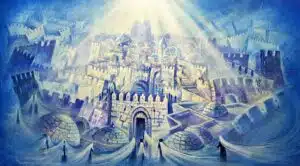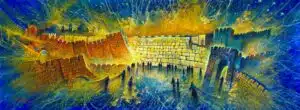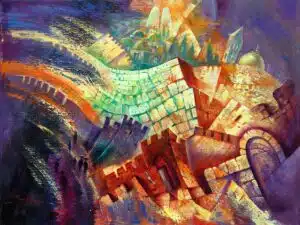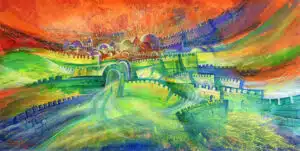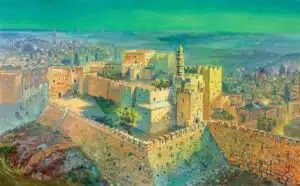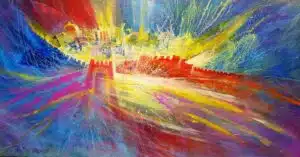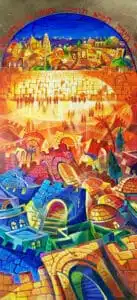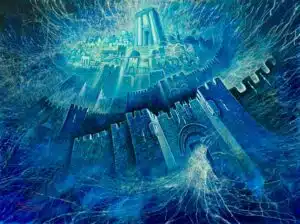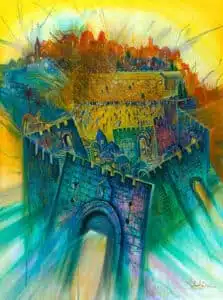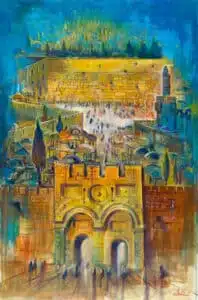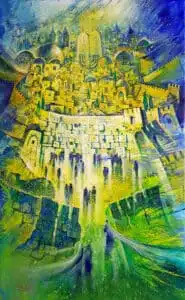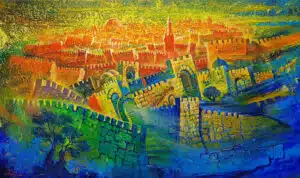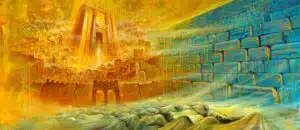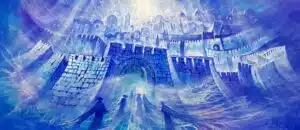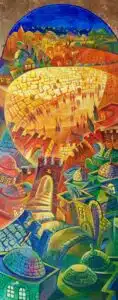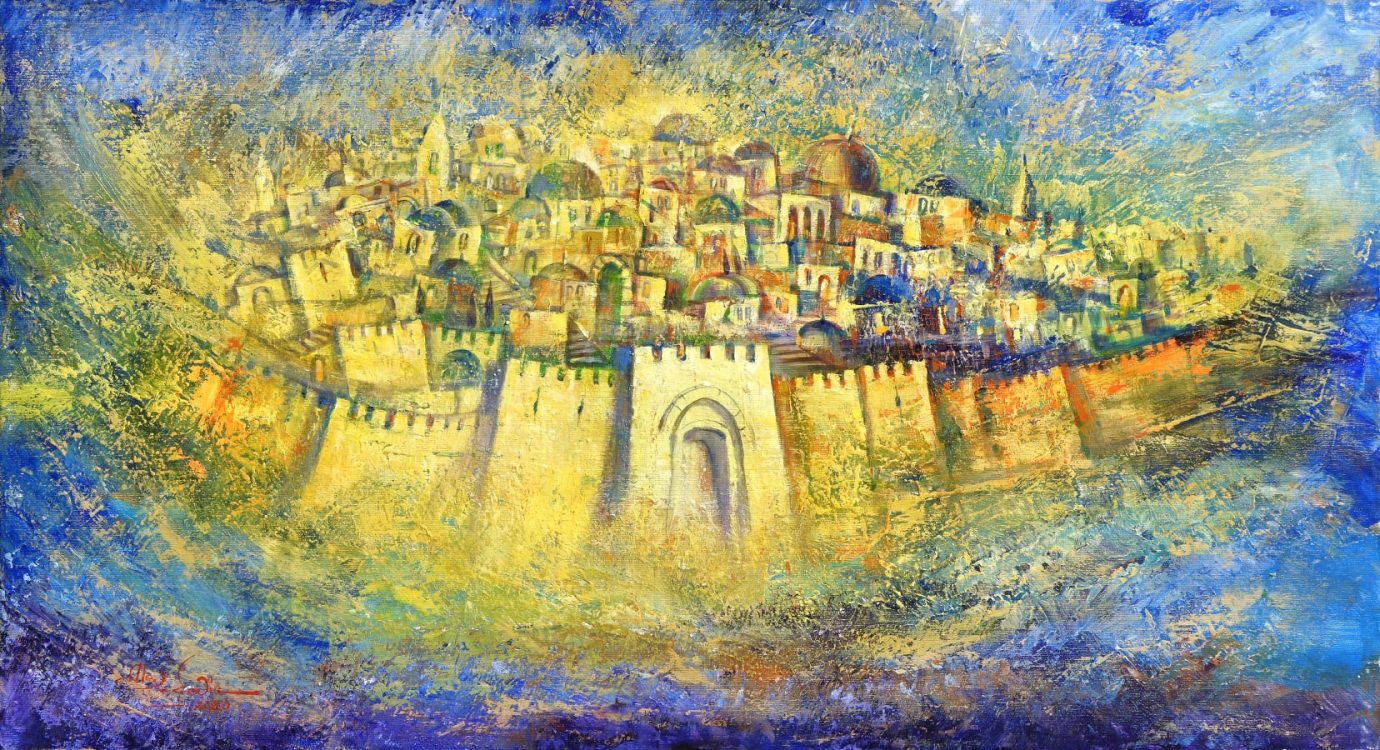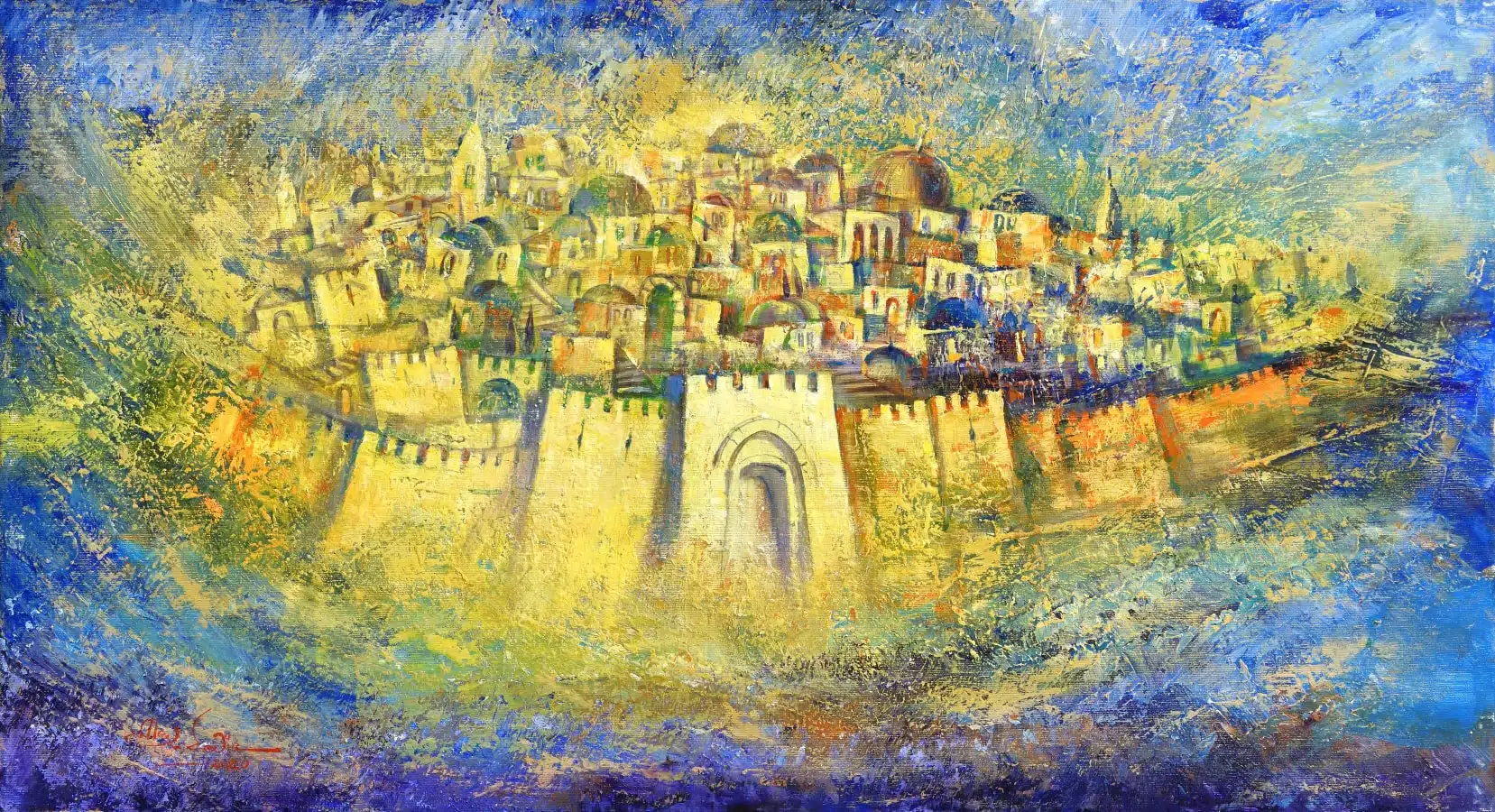
Jerusalem has long been a muse for artists around the world, its rich tapestry of history and spirituality offering endless inspiration. In modern Jewish art, this fascination has taken many forms, evolving over centuries to reflect changes in artistic movements and cultural perspectives. Today, abstract and modern interpretations of Jerusalem flourish, showcasing innovative approaches to depicting this ancient city. This article delves into the evolution of Jerusalem in Jewish art and explores how contemporary artists are redefining its image through abstract expressions and modern perspectives.
The Evolution of abstract Jerusalem in Jewish Art
Jerusalem’s depiction in Jewish art has undergone significant transformations, reflecting broader cultural and artistic shifts. Traditionally, artists focused on realism, capturing the city’s distinct architectural features and religious landmarks. These works often emphasized the spiritual and historical significance of the city, reinforcing its status as a sacred and eternal symbol for Jewish people worldwide.
As art movements evolved, so did the portrayal of Jerusalem. The emergence of modernism in the late 19th and early 20th centuries brought new techniques and styles to the forefront. Artists began experimenting with impressionism and expressionism, using color and form to convey their emotional responses to the city rather than merely replicating its physical appearance. This marked a departure from the literal to the more interpretative, allowing artists to explore the city’s essence through their unique lenses.
In recent years, abstract art has gained prominence in the depiction of Jerusalem within Jewish art. This shift reflects broader trends in the art world, where abstraction allows for more personal and subjective interpretations. Artists use bold colors, shapes, and textures to capture their perceptions of the city’s energy and spirituality, moving beyond traditional representations to engage viewers in new and thought-provoking ways.
Abstract Expressions and Modern Perspectives
Abstract art offers a fresh perspective on Jerusalem, enabling artists to explore themes of identity, memory, and spirituality without the constraints of realism. This approach allows for a more nuanced interpretation of the city, where artists can express their personal connections and emotions. Through abstraction, Jerusalem becomes a canvas for exploring the complexities of Jewish heritage and individual experience.
Modern perspectives on Jerusalem in Jewish art often incorporate contemporary issues, reflecting the dynamic and ever-changing nature of the city. Artists draw inspiration from the cultural and political landscape, infusing their works with commentary on modern life in Jerusalem. These artworks challenge traditional narratives, encouraging audiences to engage with the city as a living, breathing entity rather than a static symbol.
The fusion of abstract and modern techniques has led to a vibrant and diverse array of artworks that redefine Jerusalem’s place in Jewish art. From bold, geometric interpretations to subtle, minimalist compositions, these pieces invite viewers to reconsider their perceptions of the city. Through this artistic evolution, Jerusalem continues to be a source of inspiration and introspection for Jewish artists, bridging the past with the present in innovative and meaningful ways.
The exploration of abstract and modern interpretations of Jerusalem in Jewish art highlights the city’s enduring significance and its ability to inspire across generations. As artists push boundaries and embrace new styles, they offer fresh perspectives that resonate with contemporary audiences. These dynamic representations serve as a testament to Jerusalem’s multifaceted identity and its profound impact on Jewish culture and art. As we look to the future, the fusion of tradition and innovation ensures that Jerusalem will remain a vital and evolving muse in the world of art.
